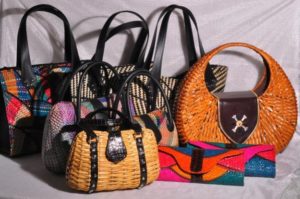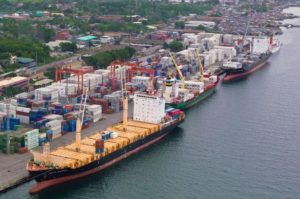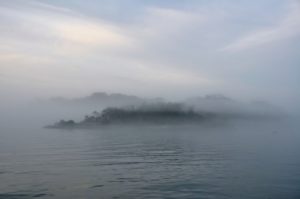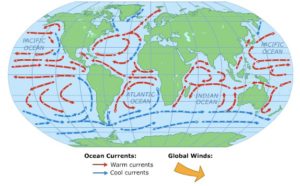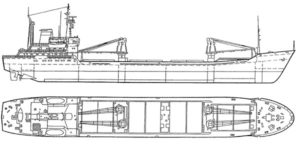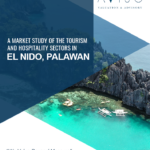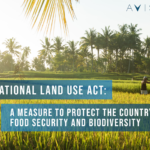
The Philippine Maritime Industry
The maritime industry is considered as one of the cornerstone of international trade and a key turbine that drives globalization and competitiveness.
According to United Nations Conference on Trade and Development (UNCTAD), it is estimated that around 80 percent of the total trade volume and 70 percent by value is carried by sea.
A study of NTPP estimated that water transport carried 1.22 percent of total passengers and 42 percent of total freight in 2006. In 2012, local shipping carried 74 million tons of cargoes and 50 million passengers. Also in 2012, there is a total 8,112 marine vessels, 28 percent of which are cargo ships, 10% are tankers and tugboats, and 60 percent are passenger service.
From 2010-2012, 442 total importations by cargo vessels were recorded. In 2012, Cargo vessels posted an average age of 11 years old.
Domestic operators total 2,497, where 509 are corporate entities and 1,952 are single proprietors. Overall, they serve 14 primary routes and 102 secondary routes. Some 1,600 tertiary routes are served by motorboats/motorbancas. The primary routes are served by four (4) major shipping lines operating 17 long haul vessels. The secondary routes are served by RORO vessels numbering to 183 operated by 34 shipping companies.
Per the Maritime Review of UNCTAD in 2012, there were 68 Philippine overseas shipping companies. There are 126 registered Philippine overseas vessels. Trade cost is determined by shipping connectivity.
In 2013, about 12.2% of the total constant GVA for transport services is accounted by maritime services, 15.7% by air transport and 86.2% by land transport. Meanwhile, maritime transport services comprise only about 0.23% of the country’s gross domestic product (GDP) in the same period. On the other hand, the GVA for water transport services increased by 12.1% in 2012 to P15.5 billion from P13.8 billion in 2011. This however declined by 0.9% in 2013 to P15.3 billion.
Sea cargo traffic stood at 198.9 million metric tons (MMT), up by 11.8% from 178 MMT in 2011. This constituted more than 99% of the total cargoes during the period.
Philippine products per region
All regions, except Metro Manila, produce rice, corn, coconut, banana, pineapple, fish, livestock, and poultry with varying quantities. In addition, all regions produced assorted kinds of furniture and handicraft.
| REGION | PRODUCTS |
| National Capital Region (NCR) | All the major industrial products above except ship but no agricultural and mineral products |
| Cordillera Administrative Region (CAR) | Fruits and vegetables, cut flowers, coffee, sweet potato, gold, copper, home-made processed food like strawberry jams, carved wooden articles, woven clothes |
| REGION I – Ilocos Region | Tobacco, mango, garlic, tomato, salt, cement, processed food like beverages and processed meat, woven clothes and pottery |
| REGION II – Cagayan Valley | Sugar, fruits and vegetables, fossilized flowers and leaves |
| REGION III – Central Luzon | Sugar, garlic, mango, chromite, processed food, cement, chemical products, textile and clothing, refined petroleum, ships, metal products, electronics |
| REGION IV A – CALABARZON
(Cavite, Laguna, Batangas, Rizal and Quezon) |
Sugar, lanzones, coffee, dairy products, coconut oil, electronics, cement, automotive, textile and clothings, home appliances, chemicals, refined petroleum |
| REGION IV B – MIMAROPA
(Mindoro, Marinduque, Romblon and Palawan) |
Gold, copper, nickle, chromite, coal, woven fabrics |
| REGION V – Bicol Region | Abaca, pineapple, abaca by-products such as paper, cordage, shoes and bags, coconut oil and other coconut by-products like coco coir |
| REGION VI – Western Visayas | Sugar, abaca, shell crafts, piña clothes |
| REGION VII – Central Visayas | Ube (yam), all kinds of furniture, electronics, ships, cement, processed foods and beverages |
| REGION VIII – Eastern Visayas | Coconut oil and other coconut by-products, fertilizer, copper concentrates |
| REGION IX – Zamboanga Peninsula | Seaweeds, bottled sardines, coal, gold, copper |
| REGION X – Northern Mindanao | Fresh and canned pineapple, cassava and cassava flour, seaweeds, fertilizer, metal products, cement |
| REGION | PRODUCTS |
| REGION XI – Davao Region | Major producer of banana and coconut, durian, coffee, cocoa, cut flower especially orchid, coconut oil, gold, copper |
| REGION XII – SOCCSKSARGEN
(South Cotabato, Cotabato, Sultan Kudarat, Sarangani and General Santos City) |
Major producer of corn, fresh and canned pineapple, papaya, asparagus, coal, copper, gold |
| REGION XIII – Caraga | Copper, nickel, cut flower, coffee, cocoa |
| ARMM (Autonomous Region of Muslim Mindanao) | Seaweeds, processed fish, woven fabrics, beads, metal craft |
In recent years, the gap between actual and target exports is driven entirely by goods. Services exports have exceeded their targets since 2011, but this was not enough to offset the weak performance of goods, which accounts for 72% of total exports.
By any measure, the Philippines has been lagging behind its neighbors in export performance. In 2012, the country’s export of goods and services is only a quarter of Thailand’s, 53% of Vietnam’s and nearly just a third of Indonesia’s. Between 2006 and 2012, Philippine exports grew more slowly at 5.2% annually, compared to the double-digit growth of Vietnam (18.5%), Indonesia (11.1%) and Thailand (10.3%).
Moreover, Philippine exports contributed substantially less to national income (GDP) than exports of other ASEAN economies to their respective national incomes. The contribution of exports to GDP is about 57% in Malaysia, 43% in Thailand, and 41% in Vietnam, against only 19% in the Philippines.
A number of factors can explain the weaker performance of Philippine exports relative to exports of its neighbors. The trade competitiveness map of the Philippines reveals why growth has been constrained.
Ports in the Philippines
The maritime industry is also regarded as a vital component in attaining socio-economic development and inclusive growth. Since the Philippines is an archipelago, shipping is the major connector between islands and connects the sea-bounded country to international trade and commerce.
The following is a partial list of ports in the Philippines organized by Luzon, Visayas and, Mindanao. This list consists primarily of shipping ports.
| LUZON | |||
| REGION | SIZE | PORT | CARGO HANDLING OPERATOR |
| Ilocos Region
(Region I) |
Small | San Fernando International Seaport
(Poro Point Freeport Zone) |
Poro Point Management Corporation |
| Cagayan Valley
(Region II) |
Small | Cagayan Freeport | Cagayan Economic Zone Authority |
| Central Luzon (Region III) | Medium | Subic Bay Port | Subic Bay International Terminal Corporation |
| Central Luzon (Region III) | Small | Port of Mariveles | Philippine Ports Authority |
| National Capital Region (NCR) | Large | Manila North Harbor | Manila North Harbour Port Incorporated |
| National Capital Region (NCR) | Large | Manila South Harbor | Asian Terminals Incorporated |
| National Capital Region (NCR) | Large | Manila International Container Terminal | International Container Terminal Services, Inc. |
| CALABARZON (IV-A) | Medium | Batangas Port | Asian Terminals Incorporated |
| CALABARZON (IV-A) | Medium | Batangas Container Terminal | Asian Terminals Incorporated |
| MIMAROPA (IV-B) | Small | Baseport Calapan | Calapan Labor Services Cooperative, Inc. |
| MIMAROPA (IV-B) | Small | Port of Coron | Prudential Customs Brokerage Service, Inc. |
| MIMAROPA (IV-B) | Small | Port of Puerto Princesa | Prudential Customs Brokerage Service, Inc. |
| MIMAROPA (IV-B) | Small | Port of Brooke’s Point | Prudential Customs Brokerage Service, Inc. |
| MIMAROPA (IV-B) | Small | Romblon Terminal | Romblon Integrated Arrastre Services |
| Bicol Region (Region V) | Small | Port of Pasacao | Daruanak Port Services, Inc. |
| Bicol Region (Region V) | Small | Tabaco Port | Tabaco Port Cargo Corp. |
| Bicol Region (Region V) | Small | Port of Legaspi | Regal Arrastre & Stevedoring, Inc. |
| Bicol Region (Region V) | Small | Port of Virac | Catanduanes Port Arrastre & Stevedoring Cooperative |
| Bicol Region (Region V) | Small | Port of Masbate | Masbate Consolidated Arrastre Inc. |
| VISAYAS | |||
| REGION | SIZE | PORT | CARGO HANDLING OPERATOR |
| Western Visayas (Region VI) | Small | Port of Culasi | Culasi Port Services, Inc. |
| Western Visayas (Region VI) | Small | Port of San Jose Buenavista | Antique Cargo Handling & Port Terminal Services, Inc. |
| Western Visayas (Region VI) | Medium | Port of Iloilo | Iloilo Integrated Arrastre Services, Co. |
| Central Visayas (Region VII) | Medium | Cebu International Port | Oriental Port and Allied Services Corporation |
| Central Visayas (Region VII) | Small | Port of Tagbilaran | Tagbilaran Maritime Services, Inc. |
| Eastern Visayas (Region VIII) | Small | Port of Calbayog | Samareños Integrated Cargo Handling Services, Inc. |
| Eastern Visayas (Region VIII) | Small | Port of Catbalogan | Catbalogan Port Authority |
| Eastern Visayas (Region VIII) | Small | Port of Tacloban | Leyte Integrated Port Services, Inc. |
| Eastern Visayas (Region VIII) | Small | Port of Isabel | Philippine Ports Authority, PMO Tacloban |
| Eastern Visayas (Region VIII) | Small | Port of Ormoc | New Eagle Arrastre Services |
| Negros Island Region (NIR) | Small | Port of Pulupandan | Philippine Ports Authority, PMO Pulupandan |
| Negros Island Region (NIR) | Small | Port of San Carlos | Philippine Ports Authority, PMO Pulupandan |
| Negros Island Region (NIR) | Small | Port of Guihulngan | TP Cargo Handling Services |
| Negros Island Region (NIR) | Small | Port of Dumaguete | Prudential Customs Brokerage Service, Inc. |
| MINDANAO | |||
| REGION | SIZE | PORT | OPERATOR |
| Zamboanga Peninsula
(Region IX) |
Small | Port of Zamboanga | · Unified Stevedoring and Arrastre Corporation
· PTC-Mindanao Port Services, Inc. · Zamboanga Arrastre and Stevedoring Corporation |
| Northern Mindanao
(Region X) |
Small | Port of Ozamiz | Integrated Port Services of Ozamiz |
| Northern Mindanao
(Region X) |
Small | Port of Tubod | Tubod Arrastre Services, Inc. |
| Northern Mindanao
(Region X) |
Small | Port of Iligan | IMASCO Arrastre and Stevedoring Co., Inc. |
| Northern Mindanao
(Region X) |
Small | Port of Cagayan De Oro | Oroport Cargo Handling Services, Inc. |
| Davao Region
(Region XI) |
Small | Port of Mati | Eastern Pacific Arrastre Stevedoring Corporation |
| Davao Region
(Region XI) |
Small | Piso Point Global Port | Piso Point Development Corporation |
| Davao Region
(Region XI) |
Medium | Port of Davao | · Davao Integrated Port Stevedoring Services, Corp.
· Filipinas Port Services. Inc. |
| SOCCSKSARGEN
(Region XII) |
Small | Port of Kalamansig | Buenaflor Arrastre & Stevedoring Services |
| SOCCSKSARGEN
(Region XII) |
Small | Port of General Santos | South Cotabato Integrated Port Services, Inc. |
| Caraga
(Region XIII) |
Small | Port of Surigao | Prudential Customs Brokerage Services, Inc. |
| Caraga
(Region XIII) |
Small | Port of Butuan | Concord Arrastre & Stevedoring Corp |
| Caraga
(Region XIII) |
Small | Port of Nasipit | PPA-Nasipit Port Services |
Philippine Port Connectivity
a. Domestic
| MANILA TO OTHER PORTS OF LUZON | ||
| Port Manila to: | Distance (km) | Travel Time |
| Port Irene | 766.81 | 1 day, 5 hours |
| Port Aparri | 734.21 | 1 day, 4 hours |
| San Fernando International Seaport | 411.93 | 15 hours |
| Port of Subic Bay | 128.84 | 4 hours |
| Port of Bataan (Mariveles) | 42.64 | 1 hour |
| Port of Batangas | 187.31 | 7 hours |
| Port of Puerto Princesa | 703.97 | 1 day, 3 hours |
| Port of Tabaco/Legazpi | 741.83 | 1 day, 4 hours |
| MANILA TO OTHER PORTS OF VISAYAS | ||
| Port Manila to: | Distance (km) | Travel Time |
| Port of Iloilo | 684.05 | 1 day, 2 hours |
| Port of Cebu | 780.90 | 1 day, 6 hours |
| Port of Tagbilaran | 845.26 | 1 day, 8 hours |
| Port of Tacloban | 721.25 | 1 day, 3 hours |
| Port of Isabel | 683.21 | 1 day, 2 hours |
| Port of Pulupandan | 681.94 | 1 day, 2 hours |
| Port of San Carlos | 675.96 | 1 day, 2 hours |
| Port of Dumaguete | 844.12 | 1 day, 8 hours |
| MANILA TO OTHER PORTS OF MINDANAO | ||
| Port Manila to: | Distance (km) | Travel Time |
| Port of Zamboanga | 977.26 | 1 day, 13 hours |
| Port of Ozamiz | 947.90 | 1 day, 12 hours |
| Port of Iligan | 938.94 | 1 day, 12 hours |
| Port of Cagayan De Oro | 973.23 | 1 day, 13 hours |
| Port of Bugo | 975.75 | 1 day, 13 hours |
| Port of Davao | 1,526.97 | 2 days, 10 days |
| Port of General Santos | 1,367.08 | 2 days, 4 hours |
| Port of Surigao | 887.38 | 1 day, 10 hours |
| Nasipit Port | 958.88 | 1 day, 12 hours |
| Port of Bislig | 1,141.50 | 1 day, 20 hours |
b. International
| APEC COUNTRIES | ||||
| Country | Busiest Port | Operator | Distance from Manila Port (km) | Travel Time |
| Australia | Port of Melbourne | Port of Melbourne Corporation | 8,172.12 | 13 days,
3 hours |
| Brunei | Port of Muara | Muara Container Terminal Sdn Bhd | 1,279.59 | 2 days,
1 hour |
| Canada | Port Metro Vancouver | Vancouver Fraser Port Authority | 10,833.90 | 17 days,
9 hours |
| Chile | Puerto San Antonio | Multi-operated Terminal | 17,983.82 | 28 days,
21 hours |
| China | Port of Shanghai | Shanghai International Port Company Ltd. | 2,076.07 | 3 days,
8 hours |
| Chinese Taipei
(Taiwan) |
Port of Kaohsiung | Taiwan International Ports Corporation | 1,090.45 | 1 day,
18 hours |
| Hong Kong, China | Port of Hong Kong | Marine Department of the Hong Kong Special Administrative Region (SAR) | 1,192.38 | 1 day,
21 hours |
| Indonesia | Port of Tanjung Priok | PT Pelabuhan Indonesia II (Persero) | 2,912.90 | 4 days,
16 hours |
| Japan | Port of Tokyo | Tokyo Port Terminal Corporation | 2,044.34 | 5 days,
6 hours |
| Malaysia | Port Klang | Port Klang Authority | 2,817.41 | 4 days,
12 hours |
| Mexico | Manzanillo Port | Port Authority of Manzanillo, Incorporated | 14,179.66 | 22 days,
18 hours |
| New Zealand | Port of Auckland | Ports of Auckland Limited (POAL) | 8,532.62 | 13 days,
17 hours |
| Papua New Guinea | Lae Port | PNG Ports Corporation Limited | 4,181.20 | 6 days,
17 hours |
| Peru | Puerto de Callao | Empresa Nacional de Puertos S.A. | 18,497.29 | 29 days,
17 hours |
| Russia | Big Port St. Petersburg | JSC Sea Port of St. Petersburg | 19,718.28 | 31 days,
6 hours |
| Singapore | Port of Singapore | PSA Singapore | 2,446.08 | 3 days,
22 hours |
| South Korea | Port of Pusan | Busan Port Authority | 2,606.84 | 4 days,
4 hours |
| Thailand | Laem Chabang Port | Laem Chabang International Terminal Co., Ltd. | 2,673.79 | 4 days,
7 hours |
| United States of America | Port of Los Angeles
(America’s Port) |
Los Angeles Harbor Department | 12,094.54 | 19 days,
10 hours |
| Viet Nam | Port of Ho Chi Minh City
(Saigon New Port) |
Saigon Newport Company | 1,745.28 | 2 days,
19 hours |
Philippine Port Authority: Port Tariff
a. Charges on vessel |
|||||||||||||||
| 1. |
|
||||||||||||||
| 2. |
|
||||||||||||||
| 3. |
|
||||||||||||||
| 4. |
|
||||||||||||||
| 5. |
|
||||||||||||||
|
|||||||||||||||
|
|
|||||||||||||||
|
|||||||||||||||
| 5.3 Lay-up fee for domestic vessels shall be one-half (1/2) of the applicable Domestic Dockage Fee. | |||||||||||||||
| 6. |
|
||||||||||||||
| 7. |
|
||||||||||||||
| 8. |
|
||||||||||||||
| 9. |
|
||||||||||||||
b. Charges on cargoes |
|||||||||||||||||||||||||||||||||
| 1. |
|
||||||||||||||||||||||||||||||||
| 2. | All containerized foreign cargoes (FCL or LCL singles) shall be charged WHARFAGE per box as follows:
|
||||||||||||||||||||||||||||||||
| PROVIDED, that if cargoes in a box are owned by more than one (1) shipper/consignee, that is, LCL containers, the WHARFAGE for non-containerized cargoes shall apply; and
|
| PROVIDED FURTHER that NO WHARFAGE shall be charged on empty containers, I.e. without contents of any sort. |
| 3. |
|
||||||||||||||||||||||||||||||||||||||||||||||||||||||||||||||||||||||||||||
|
|||||||||||||||||||||||||||||||||||||||||||||||||||||||||||||||||||||||||||||
| 4. |
|
||||||||||||||||||||||||||||||||||||||||||||||||||||||||||||||||||||||||||||
c. CHARGES ON STORAGE |
|||||||||||||||||||||||||||||||||||||||||||||||||||||||||||||||||||||||||||||
| 1. |
|
||||||||||||||||||||||||||||||||||||||||||||||||||||||||||||||||||||||||||||
| 2. |
|
||||||||||||||||||||||||||||||||||||||||||||||||||||||||||||||||||||||||||||
| 3. | The STORAGE of a container whether or not it contains cargo shall be determined on the basis of the number of calendar days the cargo stays in port after the prescribed “Free Storage Period” as follows:
|
||||||||||||||||||||||||||||||||||||||||||||||||||||||||||||||||||||||||||||
| 4. | The PPA Board of Directors shall have the power to adjust or suspend the “free storage period” and/or increase the storage charges for ports declared by it as congested. PROVIDED, that foreign transshipment containers hall not be subject to the said escalation.
PROVIDED, that foreign transhipment containers shall not be subject to the said escalation. |
||||||||||||||||||||||||||||||||||||||||||||||||||||||||||||||||||||||||||||
ENVIRONMENTAL FACTORS THAT AFFECT FREIGHT SHIPPING
Ship weather routing is a method that finds the most optimal track to avoid rough weather and to find the minimal fuel, time or cost route between ports.
Environmental factors of importance to ship weather routing are those elements of the atmosphere and ocean that may produce a change in the status of a ship transit. In ship routing, consideration is given to wind, seas, fog, ice and ocean currents.
Wind
The effect of wind speed on ship performance is difficult to determine. In light winds (less than 20-knots), ships lose speed in headwinds and gain speed slightly in following winds. For higher wind speeds, ship speed is reduced in both head and following speeds. This is due to the increased wave action, which even in following seas results in increased drag from steering corrections and indicates the importance of sea conditions in determining ship performance.
In dealing with wind, it is also necessary to know the ship’s sail area. High winds will have a greater adverse effect on a large, fully loaded tanker of similar length. This effect of beam winds over several days at sea can also be considerable. For sailing vessels, the wind is critical and accurate forecasts are vital to a successful voyage.
Wave height
Wave height is the major factor affecting ship performance. Wave action is responsible for ship motions, which reduce propeller thrust and cause increased drag from steering corrections. The relationship of ship speed to wave direction and height is similar to that of wind. Head seas reduce ship speed, while following seas increase ship speed slightly to a certain point, beyond which they retard it.
In heavy seas, exact performance may be difficult to predict because of the adjustments to course and speed for ship handling and comfort. Although the effect of sea and swell is much greater for large commercial vessels that is wind speed and direction, it is difficult to separate the two in ship routing.
Fog
Fog, while not directly affecting ship performance, should be avoided as much as feasible, in order to maintain normal speed in safe conditions. Extensive areas of fog during summertime can be avoided by selecting a lower latitude route than one based solely upon wind and seas. Although the route may be longer, transit may be less due to having to reduce speed in reduced visibility. In addition, crew fatigue due to increased watch keeping vigilance can be reduced.
North wall effect
During the Northern Hemisphere fall and winter, the waters to the North of the Gulf Stream in the North Atlantic are at their coldest, while the Gulf Stream itself remains at a constant relatively warm temperature. After passage of a strong cold front or behind a developing coastal low pressure system, Arctic air is sometimes drawn off the Mid-Atlantic coast of the United States and out over the warm waters of the Gulf Stream by northerly winds.
This cold air is warmed as it passes over the Gulf Stream, resulting in rapid and intense deepening of the low pressure system and higher than normal surface winds. Higher waves and confused seas result from these winds. When these winds oppose the northeast set of the current, the result is increased wave heights and a shortening of the wave period. If the opposing current is sufficiently strong, the waves will break. These phenomena are collectively called the north wall effect, referring to the region of most dramatic temperature change between the cold water to the north and the warm Gulf Stream water to the south.
The most dangerous aspect of this phenomenon is that the strong winds and extremely high, steep waves occur in a limited area and may develop without warning. Thus, a ship that is laboring in near-gale force northerly winds and rough seas, proceeding on a northerly course, can suddenly encounter storm force winds and dangerously high breaking seas. Numerous ships have foundered off the North American coast in the approximate position of the Gulf Stream’s north wall.
A similar phenomenon occurs in the North Pacific near the Kurishio Current and off the Southeast African coast near the Agulhas Current.
Ocean currents
Ocean currents do not present a significant routing problem, but they can be a determining factor in route selection and diversion. This is especially true when the points of departure and destination are at relatively low latitudes. Direction and speed of ocean currents are more predictable that wind and seas, but some variability can be expected. Major ocean currents can be disrupted for several days by very intense weather systems such as hurricanes and by global phenomena such as El Niño.
Ice
The problem of ice is twofold: floating ice (icebergs) and deck ice. If possible, areas of icebergs or pack ice should be avoided because of the difficulty of detection and the potential for collision. Deck ice may be more difficult to contend with from a ship routing point of view because it is caused by freezing weather associated with a large weather system. While mostly a nuisance factor on large ships, it causes significant problems with the stability of small ships
Latitude
Generally, the higher the latitude of a route, even in the summer, the greater are the problems with the environment. Certain operations should benefit from seasonal planning as well as optimum routing.
Ship and cargo characteristics
Aside from the effects of weather, ship and cargo characteristics should be considered because of its significance on the application of the ship weather routing. Ship size, speed capability, and type of cargo are important considerations because it can be used to identify the vulnerability of the ships to adverse conditions and its ability to avoid them.
Normally, ships with higher speed capability and lighter loads will have shorter routes that ships with lower speed capability or heavier cargoes. Some routes are unique because of the type of ship or cargo. Avoiding one element of weather to reduce pounding or rolling may be of prime importance.
The benefits of a successful ship weather routing are primarily in time and cost reductions and increased safety. The savings in operating costs are derived from reductions in transit time, heavy weather encounters, fuel consumption, cargo and hull damage, and more efficient scheduling of dockside activities.
The savings are further increased by fewer emergency repairs, more efficient use of personnel, improved topside working conditions, lower insurance rates as preferred risks under weather routing and ultimately, extended ship-operating life.
PORT INFRASTRUCTURE
In terms of the country’s ports, the government has done a wonderful job, due primarily to the effective governance of the PPA. During the past administration, the goal of the agency was to turn at least 10 major gateways into world-class international ports within a projected time-frame. It appears that the PPA is well on its way of meeting its target and projection toward such end.
The current port administration complemented the lofty target by introducing automation and streamlining processes in the country’s major ports and outports. The initiatives did not only ensure that these facilities will be serving as gateways for people, trade and commerce, they will actually be serving more people and goods at less the time.
There is also a great possibility that, given the status of the Philippines as a maritime country brimming with potentials, the advent of the Asean economic integration may actually bring forth foreign investments in ports, port infrastructure and port operations. Thus, it is imperative that the Philippines needs to review its cabotage policy and lay down the right framework to pave the way for the entry of foreign investments in the country’s port system.
_____________________________________________________________________________________________________________________________
Resources
https://www.searates.com/maritime/philippines.html
http://www.ppa.com.ph/
http://www.worldportsource.com/ports/PHL.php
http://www.silent-gardens.com/sea-ports.php
http://msi.nga.mil/MSISiteContent/StaticFiles/NAV_PUBS/APN/Chapt-38.pdf
http://www.answers.com/Q/What_are_the_regions_of_the_Philippines_and_their_products
http://www.marina.gov.ph/

